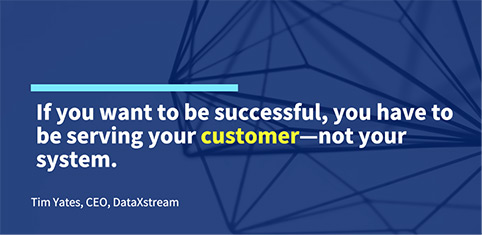Today’s businesses must be serving their customer in whatever way is best for them. That cannot happen in a system-focused environment.
The great theoretical physicist Stephen Hawking was once quoted as saying “Intelligence is the ability to adapt to change.” Whether or not he said that does not negate the fact that few things are harder to embrace than change. We get settled in the way we do things and it’s often very hard to abandon what we have known for something different. For the wholesale distribution business, this is especially true. Many organizations have proprietary order management solutions that have been tweaked, modified, adapted and changed over many years. As new business or sales requirements arose, the business process and system was modified and new technology was bolted on to accommodate those requirements. What has resulted over time are highly customized and complex workaround solutions that often require specific talent to manage them. But even with all of their complexity, many organizations find themselves in a position where they are used to these processes and systems and often have a hard time letting go of that uniqueness. The problem with this is that these individually configured systems will no longer support the global pressures and volatile changes that are happening in today’s business environment.
If you look at the way the world was when these systems were created, it made sense for what was needed. Older technologies forced businesses to organize their process around the system rather than the customer. As technology progressed and became more sophisticated, so too did customer expectations. As Internet access and adoption grew worldwide, the number of digital customers continued to climb each year, from 1.32 billion in 2014 to 2.14 billion in 2021 according to Statista. Customers have more channels than ever before with which to find and interact with your business – whether on the phone, in person, on the web, through a customer service representative, a live chat, a mobile app and so forth.
But the real tipping point has come over the past few years. The global pandemic forced more customers worldwide to pivot to online, digital interactions with businesses than ever before. The result was an accelerated migration to more digital and remote sales options. In a recent survey of 3,600 B2B decision makers in 11 countries, McKinsey & Company found that there was a significant shift in customer preference for digital versus traditional methods of doing business. B2B customers want more digital self-serve tools and were two times as likely to go with businesses who delivered an outstanding digital customer experience.
Add to this the ripple effect of significant supply chain issues over the past 24 months and the mounting pressure from competitors such as Amazon getting into the B2B distribution space – and you can see why these systems are no longer going to serve wholesale distributors well moving forward. They need to be agile to react to changing business environments, and they need to be meeting their customers in whatever way is best for them. You can’t do either of these things in a disconnected, system-focused environment.

Many organizations understand and recognize this shift but divesting themselves away from their customized systems can be challenging. It is very difficult for organizations to try and merge the technology with their business processes. The key is understanding that it is all about the customer’s experience with your organization. If a customer begins their journey on your website, then interacts on a Live Chat before being handed off to a Customer Service Rep (CSR), all of the information associated with that customer needs to be handed off seamlessly from one channel to the next through that sales process. The problem today is that for many organizations, these different channels are not connected with one another and so the information gathered and shared at each point is not ‘real-time’ or consistent. Customers are savvier now than they were even a few years ago. They expect a consistent experience and answer from each channel they interact with. They should not have to repeat themselves multiple times.
One of the benefits of moving towards a more integrated, unified cross-channel approach is the ability to refocus on the customer. By centralizing on a cloud-based ERP system like SAP, organizations now have a single place for the data to reside—one “point of truth”, as many have said. It is from this central, digital foundation that you can begin to unify all of the various sales channels through a single order management platform. Having access to real-time data and being able to carry that across all of your organization’s channels allows an organization to interact with the customer in a consistent way – whether before, during or even after the sale. That consistent streamlined view of the customer and order processing is what leads to a better customer experience – and what keeps you one step ahead of your competition.
Scott Ellyson, CEO of East West Manufacturing, brings decades of global manufacturing and supply chain leadership to the conversation. In this episode, he shares practical insights on scaling operations, navigating complexity, and building resilient manufacturing networks in an increasingly connected world.